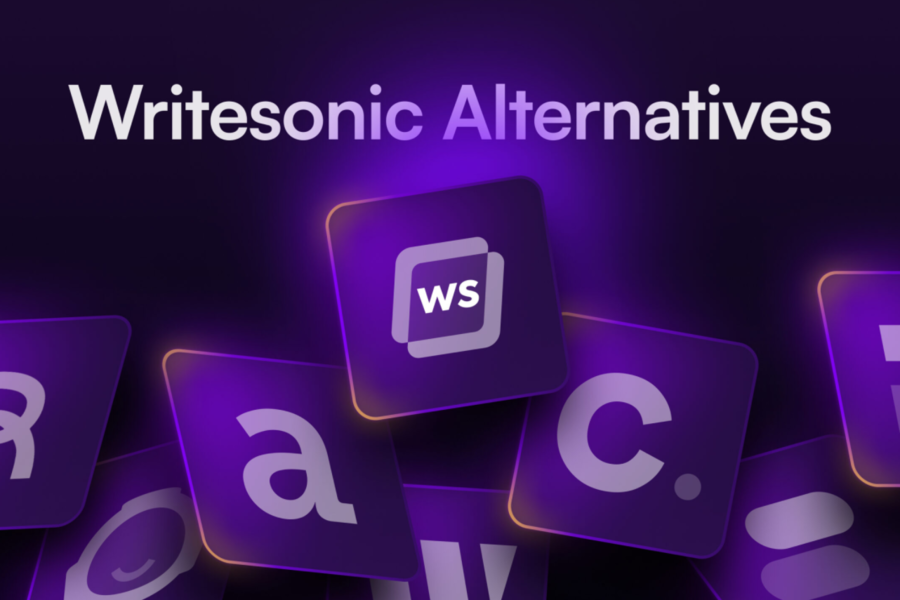If you’ve been using Writesonic but find yourself wondering if there’s a tool that better fits your creative flow or business needs, you’re in the right place. In this detailed guide, we’ll explore some of the most compelling Writesonic alternatives available today.
Whether you’re a content marketer, small business owner, or a freelance writer, the right AI writing tool shouldn’t just generate text—it should collaborate with you to produce engaging, human-sounding content that resonates with your audience. Let’s find the perfect fit for you.
Why Look for Writesonic Alternatives?
It’s no secret that Writesonic has made a name for itself in the AI writing space. But even the best tools have limitations, and what works for one person might not work for another. You might be looking for Writesonic alternatives for several reasons: maybe you need more nuanced control over tone, a different pricing structure, or outputs that sound less robotic and more original.
Understanding these common pain points can help clarify whether it’s time for you to explore other options. From creative constraints to budget considerations, let’s break down why so many users are actively searching for Writesonic alternatives.
The “Robotic” Feel and Limited Creative Control
Writesonic is great at producing content quickly—but sometimes, speed comes at the expense of creativity. If you’ve ever felt that the output lacked personality or a unique voice, you’re not alone. Many users find that while the tool gets the job done, it doesn’t always deliver the nuanced, engaging content that builds real connections with readers. If you’re aiming for a distinctive brand voice or storytelling that stands out, this limitation might prompt you to look for Writesonic alternatives that offer more flexibility and creativity.
The “Garbage In, Garbage Out” Problem
Like most AI tools, Writesonic relies heavily on the user’s ability to craft effective prompts. If your input is vague, the output will likely be generic. This places the burden on you to become highly skilled at prompting—which can be time-consuming and frustrating, especially if you were hoping for a more intuitive experience. For those who prefer a tool that requires less precise instructions and offers more collaborative input, exploring Writesonic alternatives could be a game-changer.
Price
Let’s talk budget. Writesonic operates on a subscription model, and depending on your usage, those monthly or annual fees can add up. This is especially relevant for small businesses, freelancers, or solo creators who may not need—or be able to justify—a high recurring expense. If you’re looking for a tool that offers more flexibility in pricing or a free plan with robust features, there are plenty of Writesonic alternatives that won’t break the bank.
Risk of Sounding Like Everyone Else
Because AI tools are trained on large datasets, there’s always a risk that your content might sound similar to what others are producing. If you’re building a brand or creating content in a competitive niche, originality isn’t just nice to have—it’s essential. If you’re worried about blending in rather than standing out, you might want to consider Writesonic alternatives that prioritize unique phrasing and adaptive storytelling.
6 Best Writesonic Alternatives in 2025
Now that we’ve explored why you might be looking beyond Writesonic, let’s dive into the top alternatives. Each of these tools brings something special to the table—whether it’s a user-friendly interface, support for long-form content, or unique features like brand voice customization. Below, we break down six of the best Writesonic alternatives, complete with pros and cons to help you make an informed decision.
1. Copy.ai

Copy.ai positions itself as more than just a writing tool—it’s a creative partner, especially for those in marketing and sales. Its chat-based interface feels intuitive, almost like brainstorming with a colleague. The tool is packed with templates for everything from social media posts and email campaigns to product descriptions, making it ideal for teams that need to produce a high volume of engaging copy quickly.
Pros:
- The conversational interface is beginner-friendly and encourages creative experimentation.
- A massive template library supports a wide range of content types and use cases.
- Its marketing and sales focus means features are tailored for conversion-oriented content.
Cons:
- Long-form content can sometimes lack cohesion, requiring more editing.
- Pricing may be prohibitive for individual users or very small teams.
- The wealth of features can be overwhelming at first; there’s a learning curve.
2. Rytr

Rytr is like your go-to writing sidekick: simple, affordable, and reliable. It’s perfect for individuals and small businesses that need to generate quality content without a lot of fuss. With support for over 40 use cases—including blog outlines, email drafts, and social media captions—Rytr helps users get from idea to final draft faster.
Pros:
- Clean, user-friendly interface that’s easy to navigate.
- Customizable content creation with options for setting tone and style.
- Built-in copywriting frameworks like AIDA and PAS help structure persuasive content.
Cons:
- Outputs can sometimes feel disjointed or mismatched with the intended topic.
- The AI may cut off sentences abruptly, requiring manual regeneration.
- It’s less suited for highly technical or industry-specific content.
3. Jasper AI

Jasper AI is a powerhouse when it comes to creating on-brand, long-form content. Its standout feature is the ability to learn and replicate your brand’s voice, making it a favorite among agencies and enterprises. Jasper also supports more than 30 languages, which is a huge plus for businesses operating in global markets.
Pros:
- Excellent at maintaining brand consistency across various types of content.
- Broad multilingual support makes localization easier.
- Features like “Derivative Automation” help repurpose content for different channels.
Cons:
- The learning curve can be steep for new users.
- Higher price point compared to many competitors.
- Output may occasionally include inaccuracies that need fact-checking.
4. Wordtune

Wordtune stands out from the crowd by focusing on refining your writing rather than generating it from scratch. It’s an excellent choice for writers, students, and professionals who want to improve their existing drafts. With its sentence-level rewriting capabilities, Wordtune helps you clarify your message and enhance readability.
Pros:
- Powerful rewriting features that offer multiple phrasing options.
- Enhances grammar, style, and flow without altering your intended meaning.
- Easy fact-checking and citation tools add credibility to your writing.
Cons:
- Lack of tone customization options.
- Integrations with other platforms are limited.
- Not ideal for users who need full articles generated from scratch.
5. Anyword

Anyword is the data-driven choice for marketers who want their content to perform, not just exist. Its unique selling point is the predictive performance score, which estimates how well your copy will resonate with your target audience. This makes it easier to optimize marketing campaigns and maximize engagement.
Pros:
- Data-backed insights help improve content performance.
- User-friendly interface with practical integrations.
- Effective at scaling on-brand marketing content.
Cons:
- The platform can occasionally be buggy.
- SEO capabilities are not as advanced as some other tools.
- May not be the best fit for non-marketing content.
6. Text Cortex

Text Cortex is a versatile AI writing assistant that works across platforms via a browser extension. It supports more than 25 languages and is ideal for those who need to generate and edit content in multiple contexts—from emails and social posts to blog articles.
Pros:
- Smooth integration with commonly used platforms like Google Docs and WordPress.
- Extensive template library for diverse content needs.
- Advanced grammar-checking functionality.
Cons:
- No built-in fact-checking feature.
- Output can sometimes be repetitive.
- Better suited for shorter content than long-form articles.
Final Words on Writesonic Alternatives
The search for the perfect AI writing tool doesn’t have to be overwhelming. If Writes isn’t quite meeting your expectations, there are plenty of Writesonic alternatives that might be a better match for your specific needs. Whether you prioritize creativity, cost-effectiveness, brand consistency, or performance analytics, the right tool is out there.
Many of these platforms offer free trials or freemium plans, so don’t hesitate to test a few. The best way to find your ideal AI writing partner is to experiment and see which one helps you create content that’s not only efficient but also authentic and engaging.



